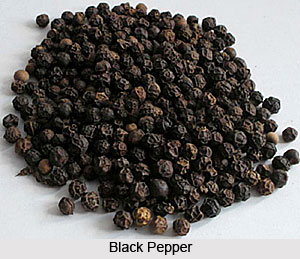 Agriculture in Mughal India remained the most important source of economy. Agriculture and allied activities formed the most vital part of the economy. A large number of crops including both food as well as cash crops were cultivated by applying different advanced techniques. During that era, irrigation system was not properly developed however some of the areas did have access to canals. Some portions of lands, previously in the hands of local chiefs, were seized and brought under the government administration. Agriculture formed the most important earning source of majority of the people during Mughal era.
Agriculture in Mughal India remained the most important source of economy. Agriculture and allied activities formed the most vital part of the economy. A large number of crops including both food as well as cash crops were cultivated by applying different advanced techniques. During that era, irrigation system was not properly developed however some of the areas did have access to canals. Some portions of lands, previously in the hands of local chiefs, were seized and brought under the government administration. Agriculture formed the most important earning source of majority of the people during Mughal era.
Mughal Empire was largely divided into different zones such as rice, wheat and millet zones. Rice dominated the eastern region and the southwest coast. Besides Gujarat, cultivation of rice with the aid of irrigation had also spread to the provinces of Punjab and Sindh. Second most prominent crop of Mughal India was wheat that was cultivated mostly in the northern and central regions of India. Further, millets were also cultivated in wheat dominant areas and other drier districts. Apart from the food crops, the cultivation of a number of cash crops also formed an integral part of the agriculture. Some of the principal cash crops included sugarcane, indigo, cotton and opium. Tobacco cultivation after being introduced by the Portuguese also spread rapidly throughout the country. Different agricultural patterns were followed. Like for instance, some portion of the land was `single-cropped`, that was being sown either for rabi or kharif harvest. On the other hand, some portion of land was `double-cropped being sown with crops of both harvests in sequence. In single cropping pattern, land remained cultivated for near about half of the year and cultivation of the same crop can be repeated.
Cultivation of different types of spices especially black pepper was more popular in Malabar Coast. Agriculture of Tea was started in the hills of Assam. Agriculture during the Mughal era also included vegetables and fruits. They were mostly cultivated in the cities. During Mughal rule, Indian economy was considered as the second largest in the world. In the 16th century, the net domestic production of India was estimated to be around 24.5 percent of the total world economy. During the reign of the Mughal Emperors, forests and waste lands have been retreated for making them appropriate for ploughing. Thus, the total retreated area defines the net area under agriculture and it was also an index for the population growth in different regions of the country.






































